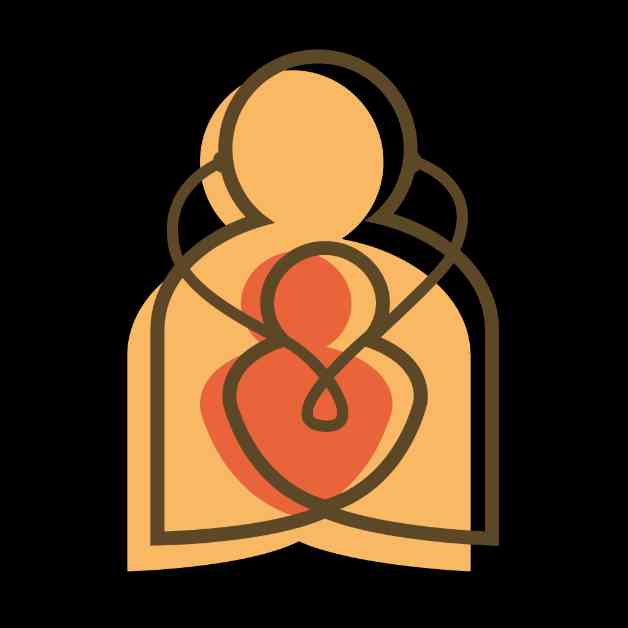Understanding the Impact of Anorexia and Bulimia on Children
Eating disorders are complex conditions that can have a profound impact on individuals, particularly children and adolescents. These disorders often stem from a difficult relationship with food, leading to extreme guilt surrounding eating, a fear of weight gain, and distorted body image perceptions. As a result, these thoughts can disrupt and take over a young person’s daily life, affecting their physical and mental well-being.
In this article, we will delve into two of the most common eating disorders affecting children: anorexia nervosa (anorexia) and bulimia nervosa (bulimia). While each disorder presents unique challenges, they share common characteristics and can have severe consequences if left untreated. It is essential for parents and caregivers to be aware of the signs and symptoms of these disorders to provide early intervention and support for their children.
Anorexia Nervosa: Understanding the Basics
Anorexia nervosa is a serious eating disorder characterized by unhealthy weight loss and a distorted body image. Individuals with anorexia often restrict their calorie intake, engage in excessive exercise, and may also purge in an attempt to reach unrealistic weight goals. This restrictive behavior can lead to malnutrition, affecting typical growth and development in children and adolescents.
While anorexia is more commonly diagnosed in females, it can affect individuals of all genders, races, ethnicities, ages, and socioeconomic backgrounds. The disorder often begins with a desire to lead a healthier lifestyle but can quickly escalate into obsessive thoughts about dieting, exercising, and losing weight. Children and teens with anorexia may become secretive about their eating habits, making it challenging for parents and healthcare providers to recognize the signs of the disorder.
Signs and Symptoms of Anorexia in Children
Parents should be vigilant for the following behaviors that may indicate their child is struggling with anorexia:
– Eating only a limited number of “safe” foods that are low in calories and fat
– Avoiding eating food on their plate by moving it around or cutting it into small pieces
– Refusing to eat food they prepare for others
– Engaging in distracting behaviors to suppress hunger, such as chewing gum or drinking excessive amounts of water
– Exercising excessively and obsessively
In addition to these behaviors, children with anorexia may exhibit other signs such as wearing baggy clothing to conceal their body, isolating themselves from friends and family, experiencing rapid fatigue, displaying signs of depression or anxiety, and having emotional outbursts.
Impact of Anorexia on the Body and Mind
Anorexia can have far-reaching consequences on a child’s physical and mental health. The disorder affects various organ systems, including the heart, brain, bones, and digestive and reproductive systems. Some of the physical changes associated with anorexia include:
– Feeling constantly cold due to a lack of essential fat reserves
– Dizziness, fainting, or near-fainting episodes
– Visible bones and muscle wasting
– Hair loss and brittle nails
– Dry and rough skin
– Disrupted menstrual periods or amenorrhea
– Gastrointestinal issues such as stomach pain, constipation, and bloating
– Stunted growth and development
– Anemia resulting in fatigue, weakness, and dizziness
In addition to these physical changes, anorexia can also impact a child’s mental health, leading to feelings of depression, anxiety, irritability, decreased concentration, and difficulty completing tasks such as schoolwork. It is essential to recognize the severity of these effects and seek prompt medical and psychological intervention to prevent further harm.
Bulimia Nervosa: Understanding the Cycle of Binging and Purging
Bulimia nervosa is another common eating disorder characterized by episodes of binge eating followed by purging behaviors to compensate for the excess food consumption. During a binge, individuals with bulimia consume large quantities of food in a short period, often feeling out of control and distressed. Following the binge, they may engage in purging through vomiting, excessive exercise, or laxative use to alleviate guilt and fear of weight gain.
Unlike anorexia, where weight loss is a primary concern, individuals with bulimia may have fluctuating weight due to the cycle of bingeing and purging. Bulimia can affect individuals of all genders, races, ages, and socioeconomic backgrounds, with most cases occurring in teenage girls and young adult women. The disorder often stems from dissatisfaction with one’s body and a means of coping with emotional distress through food-related behaviors.
Signs and Symptoms of Bulimia in Children
Parents should be attentive to the following behaviors that may indicate their child is struggling with bulimia:
– Engaging in secretive binge eating episodes
– Spending excessive time planning and executing binges
– Avoiding social activities to engage in bingeing and purging behaviors
– Hoarding or hiding food in various places
– Using exercise or laxatives to purge excess food consumed
Children with bulimia may also experience other issues such as depression, suicidal thoughts, substance use, and changes in weight and physical appearance. It is crucial for parents to be aware of these signs and seek professional help to address the underlying causes of the disorder.
Impact of Bulimia on the Body and Mind
Bulimia can have severe consequences on a child’s physical and mental health, affecting various organ systems and overall well-being. Some of the physical effects of bulimia include:
– Dental decay and erosion due to exposure to stomach acids during purging
– Fluctuations in weight and body composition
– Irregular or absent menstrual periods
– Swelling and puffiness in the face and throat
– Dizziness, fainting, and dehydration
– Gastrointestinal issues such as upset stomach, constipation, and sore throat
– Damage to vital organs such as the liver and kidneys, as well as heart problems
In addition to these physical effects, bulimia can also impact a child’s mental health, leading to feelings of depression, anxiety, and low self-esteem. Without timely intervention and treatment, bulimia can result in severe health complications and even death, underscoring the importance of early detection and intervention.
Treatment and Recovery for Eating Disorders
Early recognition and intervention are crucial for the successful treatment of eating disorders in children and adolescents. Parents, caregivers, and healthcare providers play a vital role in identifying the warning signs and seeking appropriate support for affected individuals. Treatment for eating disorders typically involves a multidisciplinary approach, addressing the physical, mental, and emotional aspects of the disorder.
Medical Treatment
In cases of severe malnutrition or medical complications, individuals with eating disorders may require hospitalization to stabilize their physical health. Medical professionals, including pediatricians and dietitians, work together to restore healthy eating habits, manage weight restoration, and address any nutritional deficiencies. Hospital-based treatment may be necessary to address acute medical issues and ensure a safe recovery process.
Counseling and Therapy
Counseling and therapy are essential components of eating disorder treatment, helping individuals address the underlying causes of their disordered eating behaviors and develop healthier coping mechanisms. Cognitive-behavioral therapy (CBT), family therapy, and nutritional counseling are common approaches used to support individuals in recovery. Counseling sessions focus on improving self-image, managing unhealthy thoughts and behaviors, and enhancing overall emotional well-being.
Family therapy plays a critical role in supporting the entire family unit through the challenges of living with an eating disorder. It helps family members understand the disorder, communicate effectively, and provide a supportive environment for the individual in recovery. Nutrition counseling with a registered dietitian is also crucial in helping individuals return to healthy eating habits and establish a balanced relationship with food.
The Importance of Early Intervention
Early detection and intervention are fundamental in the successful treatment of eating disorders and improving long-term outcomes for affected individuals. Parents and caregivers should be vigilant for changes in their child’s eating patterns, behavior, and emotional well-being, seeking professional help if they suspect an eating disorder may be present. Timely intervention can prevent the progression of the disorder and reduce the risk of severe health complications.
If you are a parent concerned about your child’s eating habits or mental health, it is essential to communicate openly with your child’s healthcare provider and seek appropriate support. Adolescents struggling with eating disorders may not always recognize the severity of their condition, making parental intervention crucial in facilitating early treatment and recovery. Remember that with timely intervention, support, and a comprehensive treatment plan, individuals with eating disorders can achieve lasting recovery and lead healthy, fulfilling lives.
Conclusion
In conclusion, anorexia nervosa and bulimia nervosa are complex eating disorders that can have devastating effects on children and adolescents if left untreated. Parents, caregivers, and healthcare providers play a crucial role in identifying the signs and symptoms of these disorders and providing early intervention and support for affected individuals. By raising awareness, promoting early detection, and seeking appropriate treatment, we can help children and teens overcome the challenges of eating disorders and achieve lasting recovery. Remember that recovery is possible with the right support, guidance, and commitment to health and well-being.

















